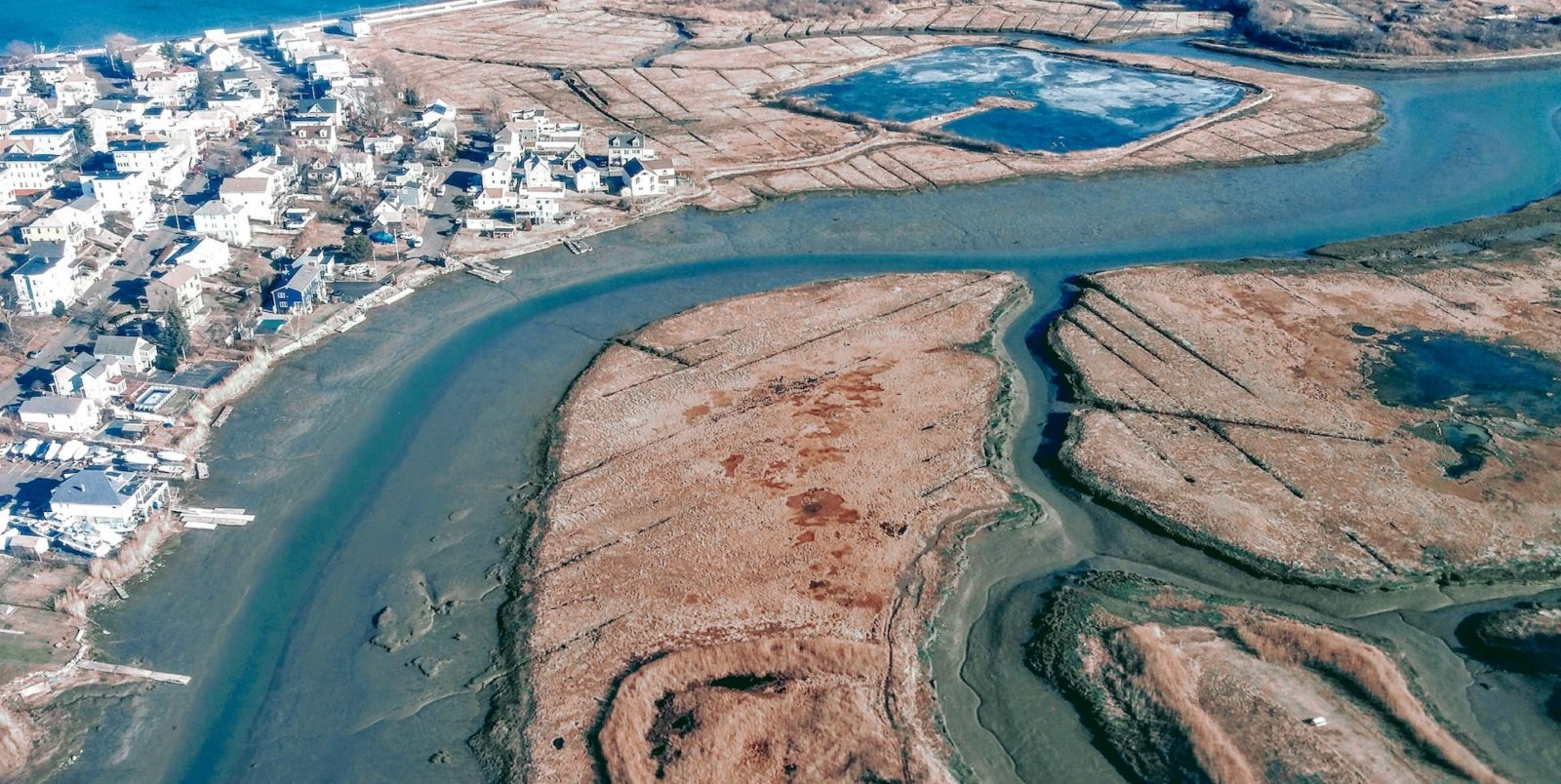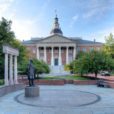In the spirit of Hispanic Heritage Month, it’s important to highlight the ongoing fights for justice and equity that Latinx activists continue to hold throughout their communities. Many of these efforts are against the advancements of gentrification and environmental injustice that disproportionately affect communities of color in middle- to low-income communities.
In the United States, gentrification and the displacement of long-time residents has been most intense in the largest cities. The National Community Reinvestment Coalition (NCRC) notes that Black and Hispanic U.S. residents were impacted the most by gentrification, affecting at least 135,000 people in 2019. More recently, NCRC ranked Boston as the third most gentrified city in the U.S. with 21.3 percent of neighborhoods being gentrified from 2013 – 2017. Areas such as Dorchester, Jamaica Plain, Roxbury, Mattapan, and East Boston are examples of growing gentrification throughout Boston and, coupled with exponential growth, the issue does not seem to be dying down.
East Boston in particular has faced gentrification in recent years as Maverick, one of the neighborhoods closest to Downtown Boston, gains popularity in Boston’s housing market with its views of Seaport and the city skyline. This means that longtime residents of the area are being rapidly pushed out towards areas that face heavy environmental burdens such as the Eagle Hill neighborhood and others surrounding the Chelsea Creek, where most industrial materials and environmental burdens are located.
The East Boston neighborhood houses the Logan International Airport, borders the salt mounds in Chelsea, and accommodates the jet oil and heating tanks mainly used for the airport and heating residential homes — and this is where the problem resides.
In an area where 64 percent of community members are people of color and 54 percent of the community are immigrants, East Boston is considered an Environmental Justice community by the Commonwealth as many residents are burdened with various environmental and industrial hazards. These hazards include air and noise pollution from the Logan International Airport, the salt mounds residing next to the Chelsea Creek that have been linked to asthma, and the jet and oil tanks that sit near the American Legion Playground/Recreation Area. All these factors have consistently had negative health effects and risk of public safety on the community as rising emissions have been linked with a type of air pollution that can lead to heart attacks and strokes, according to various university studies. So, when Eversource Energy gave the initial proposal for the development of an East Boston electric substation in 2014, the issue of environmental injustice became much more prominent in the community — and it’s an issue that persists today.
East Boston Eversource Substation
The proposal for the electric substation stems from the importance of converting high voltage electricity to a lower voltage that can be accessed at home. However, with the continuous growth of East Boston, the director of Eversource, Bob Clarke, notes that the neighborhood, along with Chelsea, Lynn, and Revere, all rely on the Chelsea substation for electricity, but the substation is at maximum capacity. As a result, the utility’s next step is to develop a secondary electric substation. Eversource owns a plot of land next to the Chelsea Creek and had initially proposed to build it there. However, Channel Fish, a local seafood supplier, voiced opposition due to concerns over electromagnetic radiation affecting the sensitive machines. They successfully launched a petition and Eversource instead decided to move farther away from Channel Fish. For Eversource, this would be only one of the many problems that the company faced in their efforts to erect a secondary substation.
Professor and local resident Marcos Luna had other concerns with the project, specifically that it was located in a high flood risk area. East Boston is considered a prime example of the effects of climate change and the dangers of high-flood zones coupled with rising sea levels. Luna told WBUR’s Earthwhile that the project is only viewed to have short-term success since the site is at high-risk for ten foot sea levels in future years and would experience heavy failure in extreme scenarios such as a hurricane. Luna, who sits on the board of directors for GreenRoots Chelsea, presented various geographic information system (GIS) maps that showcased multiple high-risk scenarios, all of which were dismissed by Eversource. Luna told Earthwhile, “You’re basically putting infrastructure in harm’s way when you know things are going to get bad in that location.”
For locals and activists, the project highlights a classic case of environmental injustice, in which a company places an industrialized project in often low- to mid-income communities or Black, Indigenous, or people of color (BIPOC) communities. Many residents have voiced their concern of the project further contributing to the growing burden of pollution in an already heavily industrialized area. However, despite opposition, many of residents’ concerns were dismissed by Eversource. In 2017, GreenRoots mobilized a group of Latinx activists and residents to attend the final hearing of the permitting agency. They note that although translators had been requested, the state only offered to translate Spanish testimonies to English in benefit of the agency. As a result, the entire hearing was not translated from English to Spanish, and left residents excluded from the proceedings for four hours.
This is not the first time that the state has failed to make public participation accessible, which led GreenRoots to file a federal lawsuit against the state. In addition, many of the meetings were scheduled during inflexible times. The Energy Facilities Siting Board, for example, scheduled the final vote on the project from 1pm to 8pm on Monday, February 8th, a time when the average resident was at work, taking care of their children, or dealing with doctor appointments. Executive Director of GreenRoots, Roseann Bongiovanni, says “It comes from a real place of privilege. A place of, ‘well, this works for us so it should work for everybody.’ No, it doesn’t work for everybody.”
In addition to the inconvenient timing, many of these meetings were initially proposed to be in person, but due to the pandemic were instead held on Zoom. Many residents and high authority figures asked for the meetings to be postponed in order to allow for engagement from the community, but the state denied their requests.
If Eversource receives a favorable vote from these hearings, the substation will be built next to the American Legion Playground and Recreation Center. This environmental hazard places children and families in danger, and brings an additional source of pollution to a community already burdened by many environmental and industrial issues.
During Hispanic heritage month, it is important to recognize continued injustices plaguing Latinx communities in the United States and understand our role in both protecting these communities and ensuring justice.
As of now, the Energy Facilities Siting Board has approved the electrical substation near Chelsea Creek in East Boston. However, a non-binding question on the Eversource Substation will appear in the November Ballot as a method of meaningful participation from Boston residents. The question is as follows: “Should a high voltage, electric substation be built at 400 Condor Street in East Boston, along the Chelsea Creek, near homes, parks, playgrounds, jet fuel storage, and in a flood risk area rather than in a nearby alternative safe and secure location such as non-residential Massport land at Logan Airport?”
If you are a resident of East Boston, please make sure to vote on the issue. You can check your voter registration status here and find your polling location here.









